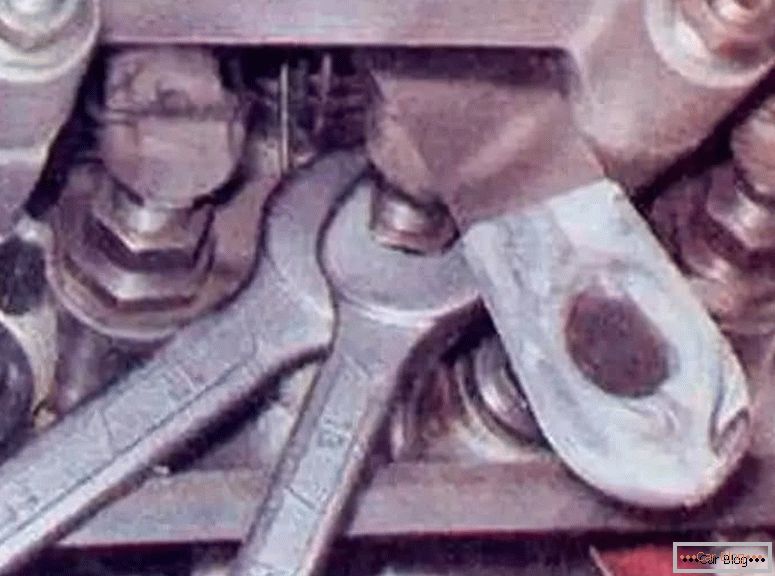Power steering, under the short abbreviation: power steering or power steering, has become an integral part of most vehicles. From the title it is clear that the principle of operation is based on the laws of hydraulics. For operation, the mechanism uses the pressure created by the pump, which is driven from the engine crankshaft. That is, by means of a belt transmission, oil gets into the steering unit, and this creates a comfortable rotation of the steering mechanism.
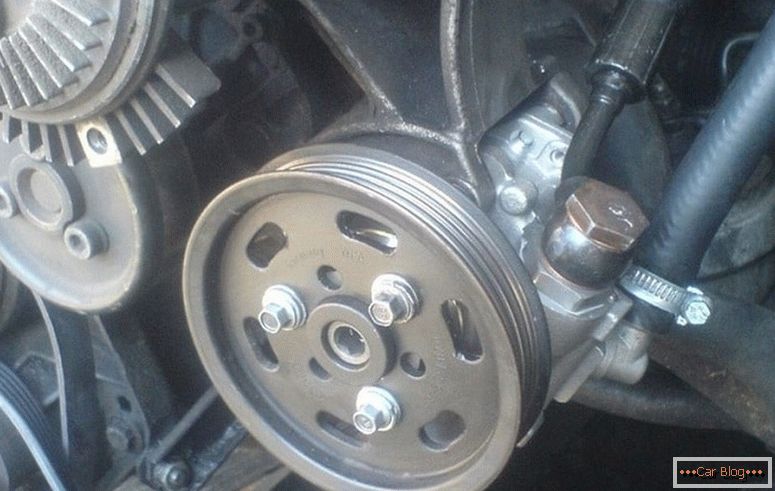
Power steering
The device was launched in 1925 by Francis Davis. Since it was extremely difficult to rotate the steering wheel on a cargo vehicle, the power steering was here, by the way. Already after, when the device has undergone a lot of changes, they began to equip the rest of the car models. Of course, the principle of operation remained the same, but some initial defects were corrected. Now the power steering is a reliable mechanism that requires regular attention. It is necessary to monitor its performance, that is, inspect its tightness and monitor the level of fluid in the tank. If the malfunction is fixed in time, the device will be operated for a long time.
Content
- 1 When repair or replacement of power steering is needed
- 2 Checking power steering pump
- 3 Replacing the power steering pump
When repair or replacement of power steering is needed
Denying the mechanism may, at any time, this does not preclude an emergency on the road. Although the car will not lose steering, but the load on it will increase significantly. Distinctive signs of system failures are:
- the occurrence of noise in the pump unit, which may change during the rotation of the steering wheel;
- there are leaks on the pump casing;
- the liquid in the tank has decreased and does not reach the desired level;
- rupture high pressure hose;
- it became difficult to control the steering wheel.
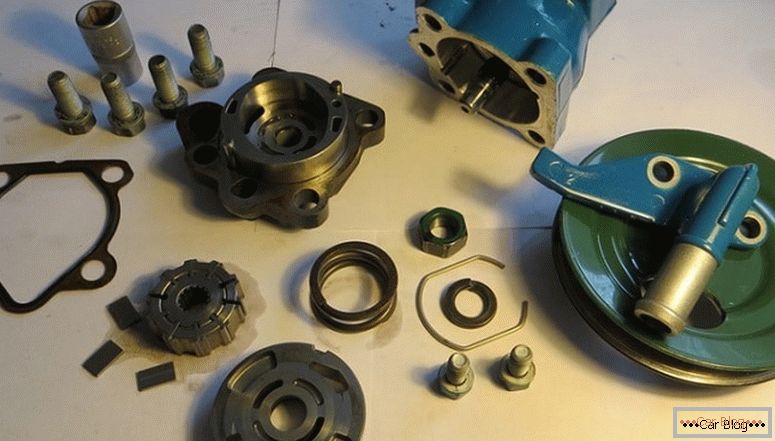
Components of the power steering pump
Check the power steering pump
The first thing you need to identify by external signs, what is the failure of the pump. Here are some common problems:
- When the glands are worn, there should be a leakage and its level in the tank should be lowered. It is worth paying attention to the pipes connected to the pump: their fittings must be dry.
- If there is a jammed rudder or spasmodic efforts have appeared, it is possible that air has penetrated into the device, which eventually created air plugs. To remedy the situation, you need to pump the knot by repeatedly rotating the “donut” all the way to both sides. It is important that the motor is shut off at this point. Also, plugs may occur due to clogged valve valves. Rinse all parts of the pump assembly.
- There is noiseThis means that it is a matter of worn bearings, but it is better to make sure by pulling the pump drive pulley and the shaft in opposite directions, while the belt should be removed. Backlash is well felt by touch. Also, the appearance of noise may lie in the bully ends of the elements and stator plates of the pump.
- When bearings are worn, glands for a long time will not work and will quickly fail. Wear, bearings can not only because of dirty fluid, but also from the constricted pulley drive belt.
If a malfunction is identified, then you should not put off repair or replace the pump until later. Change the entire power steering is difficult, because you need to remove the engine and disassemble the front chassis of the machine. Therefore, in order to avoid mistakes, let us consider how to replace the power steering pump?
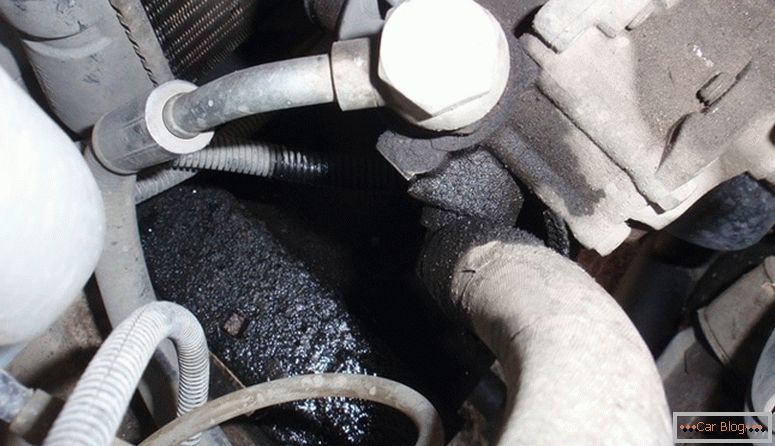
Drivers on the power steering
In foreign cars, it is more difficult to replace the power steering pump as the mechanisms are complicated with new elements. In this case, it would be appropriate to visit the service station.
Replacing the power steering pump
- First you need to remove the air filter with the box. When replacement is not done indoors, it is better to close the air intake pipe temporarily.
- After it is necessary to remove the belt from GUR. Before this, it is important to remember the belt tension force or even mark it. When removing the belt, you need to release the tension roller, and then loosen the belt. After that, one protective bolt is removed, and the other is allowed to lay aside protection. Along the way, you can change the tensioners themselves.
- Next, de-energize the car's power supply, remove the terminals from the battery. After removing the sensor terminals with GUR and unscrew the return hoses. It is worthwhile to prepare in advance the dishes for the oil that will flow from the tubes.
- Now, move from the pump through the high-pressure tube. We remove the bolt by 10. We shake it from side to side, we should do it carefully, because the tip of the tube is aluminum and can deteriorate.
- Take the pre-prepared container to drain the old power steering fluid.
- Hidden bolts behind the belt pulley are removed by turning the pulley on each.
- Remove the pump.
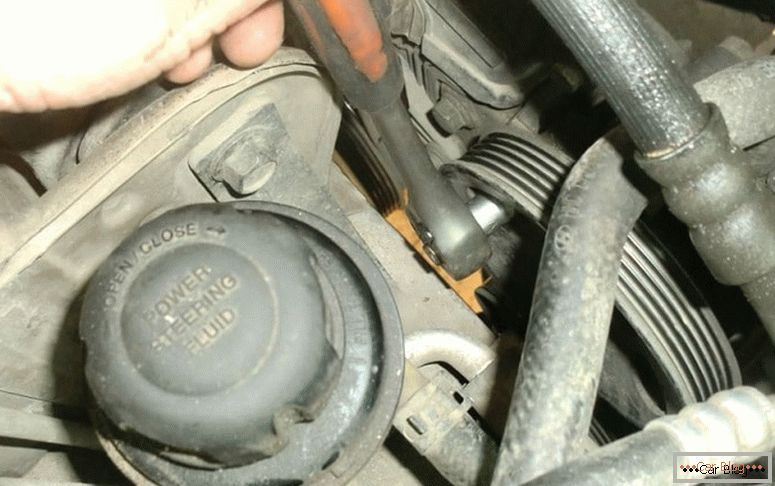
Pump replacement process
Putting the pump in place should be in the same sequence, but there are some features:
- Put the sock on the high-pressure tube so that it sits well and does not touch anything. Remember that the low pressure inlet at this time must be isolated by a shipping cap.
- Next, lightly bolt the pump onto the exhaust manifold side. Mark the location of the pipe relative to the body.
- Reinstall the pump. Refill it with power steering fluid. Insert all tubes back and squeeze with collars, view no aphids.
- Fasten the belt and set the tension on the markings.
- We do the pumping system. The main thing is not to start the engine, because during the process the fluid from the GUR will fly out. It is worth starting with a slight warming up of the tank and channels with a technical hairdryer. You can also warm up the transmission fluid. We lower the return hose into the container. Fill the liquid in the tank and scroll the starter, which turns the pump itself, and it is already pumping fluid. Then through the return pipe, it goes into the tank. When to finish pumping can be determined by the color of the drained fluid. After we connect the hose to the cistern, and again we twist the starter, while at the same time we twist the steering wheel in different directions by 25% of the turnover.
- After refilling the power steering fluid in the tank to the required level "MAX". Do not rush to start the engine. Steering wheel spin 5 times until it stops left and right. We look to prevent air leaks, and pour liquid in time. Open the air intake pipe and start the car. At the hearing, we determine whether there are extraneous noises and beats. Along the way, we turn the steering wheel and hold it on the extreme points for several seconds. Again, add the liquid to the desired strap.
- Fasten back the collector protective clamp and the box with the air filter, the replacement of the power steering pump is over.


